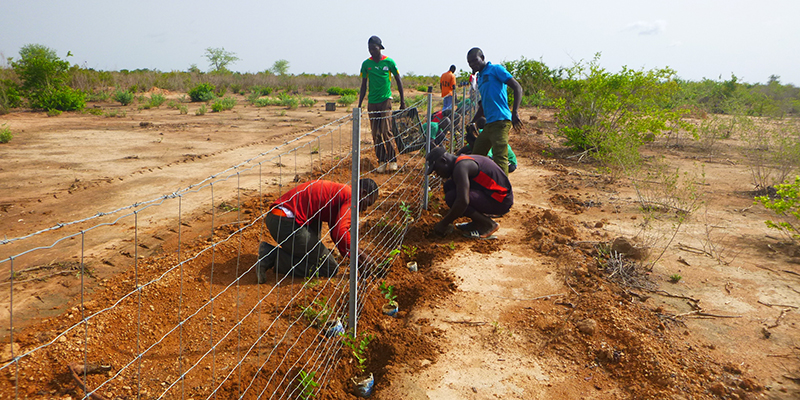A report on the state of the environment and socio-economic conditions in fragile ecosystems reveals the extent of land degradation in dryland Africa and shows how closely it is related to hunger and poverty. The report’s authors make an urgent call for increased investment in land restoration for small-scale farmers.

The report was carried out by a major EU-funded Food and Agricultural Organisation (FAO) programme called Action Against Desertification. It states that over half of the area in the six African countries, where the programme operates – Burkina Faso, Ethiopia, The Gambia, Niger, Nigeria and Senegal – need restoration, an estimated 14 million hectares (ha), nearly half the size of Belgium.
“These findings again show what a huge challenge land degradation really is,” said Moctar Sacande, lead author and in charge of Action Against Desertification. They also make clear how closely land degradation is linked to poverty, he added. “80% of the area’s inhabitants, which is home to 1.8 million people, said they experienced food insecurity.”
Pietro Nardi of the European Union, the programme’s major sponsor, said: “Despite the momentous challenge, land degradation is not yet irreversible.” He explained that Action Against Desertification, now in its final stages, has covered an estimated 45 000 hectares of degraded land in four years, reaching around 500,000 people.
Poverty and land degradation
The report, called “Biophysical and socio-economic baselines: the starting point for Action Against Desertification”, is the result of surveys undertaken in the eight countries covered by Action Against Desertification, which also include Haiti in the Caribbean and Fiji in the Pacific.
The study combines biophysical data to analyse the state of the environment in the areas of intervention with household surveys to determine the living conditions of the people concerned.
A grim picture emerges from the biophysical data, collected with Collect Earth, an innovative tool developed by FAO using high-resolution satellite imagery. In Nigeria, for example, half of the forests in the area where Action Against Desertification works have disappeared in less than 10 years. Desertification affects an estimated 71% of the area in neighboring Niger.
Data on local living conditions, obtained following the Sustainable Livelihood Framework, reveal a close relationship between poverty and land degradation. Nearly all interviewed households in Burkina Faso had experienced uncertainty about their food supply in the preceding year. In Fiji, where rising sea levels are a major threat, a majority said that water supplies sometimes runs dry.
Bringing restoration to scale
This study is a high point of Action Against Desertification’s monitoring and evaluation efforts. Earlier research made it into Science magazine, as it found that forest in drylands are much more extensive than previously assumed. The same research allowed to map restoration needs and opportunities for Africa’s Great Green Wall for the first time.
Monitoring and Evaluation is a key element of Action Against Desertification’s successful land restoration approach. It allows to measure the progress and the impact of activities on the ground. At the same time, it generates a wealth of knowledge on dryland restoration for application well beyond the project itself.
Central to the success of Action Against Desertification is a restoration method that places rural communities at the heart by focusing on their needs for useful species and preferences in support of their livelihoods. A lot of effort also goes in improving the living conditions of local communities by developing the economic potential of non-timber forest products, such as fodder and gum Arabic.
Currently, the initiative is expanding its activities in African countries. But a lot more is needed, Sacande argues, pointing out the findings of the survey. “Action Against Desertifcation can be a game-changer for Africa’s drylands and beyond. But it will require major investments to bring its activities to scale.”
Action Against Desertification is an initiative of the African, Caribbean and Pacific Group of States (ACP) in support of the Great Green Wall initiative and UNCCD national action programmes to combat desertification. It promotes sustainable land management and restoration of degraded land in Africa, the Caribbean and the Pacific. Action Against Desertification is implemented by FAO and partners with funding from the European Union.
